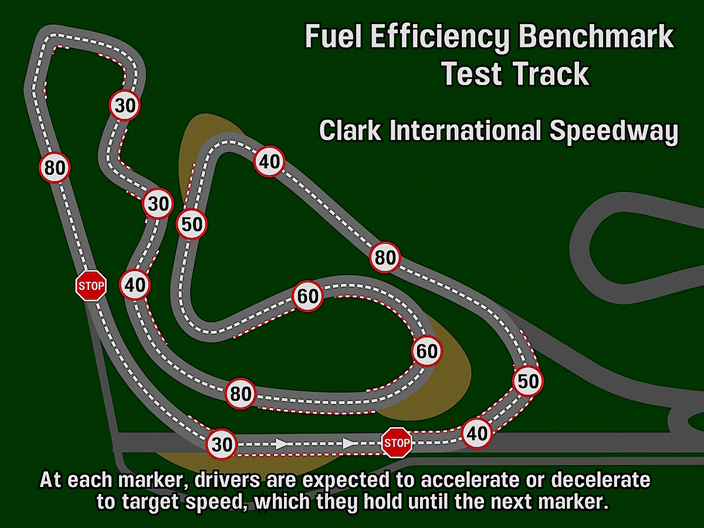I remember a day, not so long ago, when the first question I would get about a car I was testing was: “What’s the 0-100 time?” or “How does it handle compared to…?”
Now, the number one question is, you guessed it: “What’s the fuel consumption?”
My how times have changed. It’s like those rockers from the Seventies who used to drop acid, but nowadays, ask each other for antacid instead, or how you ask your partner to turn out the lights for economic rather than romantic reasons. And just because fuel is relatively cheap these days, it hasn’t changed the importance of it––because only those who still believe that Wrestlemania is not scripted, think that it will stay that way forever.
This of course has spawned a whole new marketing opportunity for car makers and oil companies alike. No longer do car manufacturers brag about speed or take journalists on handling courses, they usually trumpet class-leading fuel efficiency based on either in-house tests, or the questionable third party ones that incentivise a flattering figure.
Enter Car Awards Group, or CAGI, who dole out the annual Car of the Year and Truck of the Year awards. They have devised a test that measures the weight of the car before and after a run to determine the amount of fuel used. They believe that it is the most accurate way as there’s usually a discrepancy between the calibration of different pumps as well as air pockets that could corrupt the reading. The test was conducted in Clark International Speedway under very strict controls and could be the country’s first completely independent, scientifically-backed fuel economy test that can produce realistic figures that mimic daily driving in the Philippines. Or not.
See, the problem is, as scientific, transparent and regulated as it is, it has yielded some pretty shocking results. And not everyone is happy about it. I’ve listed the complete set of figures below, but let’s take the Trailblazer as an example for now. I have one. So I find it pretty difficult to digest that I’m consuming 35% less fuel than any other owner. I mean, my mom always said I was special, but not that special. Otherwise car companies would have shelved their hybrid R&D programs and offered me millions of dollars for my right foot.
Concerned, I conducted my own online survey from around 25 Trailblazer owners and was not surprised to learn that not one of them recorded CAGI’s figure of 6.3km per liter. Average city mileage was somewhere in the mid eights and around 14 for highway using the most sensitive and precise testing equipment ever: the wallet.
These are real owners, like myself, who monitor the consumption not only from the on board computer but from the seat of the pants so to speak. We’re terribly sensitive to it. So it’s puzzling to see a random figure thrown at us as gospel and remain quiet about it. It’s like someone testing out your appliances at home and saying it uses more energy than it claims, but you’re still paying Meralco the same amount every month.
Just to be clear, this is not an attack or an allegation; I have nothing but the deepest respect for the people behind this, especially technical director, Ferman Lao. He’s not only a friend but a very accomplished engineer and I applaud the group for trying to come up with an independent, scientific, properly controlled process that can be used as a realistic benchmark. But I think it’s fair to agree that as noble as it is, it is a work in progress and that the figures shouldn’t be published as fact until all parameters are agreed upon.
In CAGI’s defence, they really did come up with a thorough procedure. I guess the beef that most (if not all) of the manufacturers have is that no matter how scientific these figures may very well be, they contradict real world experiences and a universally accepted measurement (think: crank horsepower vs wheel horsepower) So at the end of the day, even assuming that CAGI’s formula is technically correct and superior, quoting it publicly without proper context is like all of a sudden switching from Celsius to Fahrenheit without a reference table. It can leave some people cold.
CAGI FEB Test Results
BYD
F5 A/T – 8.4 km/l
L3 M/T – 9.4 km/l
Chevrolet
Spark 1.0L A/T – 7.0 km/l
Spin 1.3L M/T diesel – 12.2 km/l
Trailblazer A/T diesel – 6.3 km/l
Ford
Fiesta EcoBoost SportShift – 9.3 km/l
Foton
Thunder 4x2 – 5.5 km/l
Thunder 4x4 – 4.7 km/l
Tornado M/T – 8.8 km/l
Traveller M/T – 6.0 km/l
Kia
Rio M/T – 10.5 km/l
Sportage A/T FWD – 8.5 km/l
Mazda
6 – 7.2 km/l
CX-5 – 6.9 km/l
Mitsubishi
Lancer 1.6L GLX M/T – 9.8 km/l
Mirage G4 M/T – 11.1 km/l
Mirage GLS CVT – 11.1 km/l
Toyota
Vios 1.3E M/T – 10.5 km/l
Vios 1.3E A/T – 8.4 km/l
*Note: Test cycle parameters were developed to simulate a set of traffic conditions from 2010 and actual fuel consumption on the road of the tested vehicles will vary as driving habits and traffic conditions are different for every motorist.





